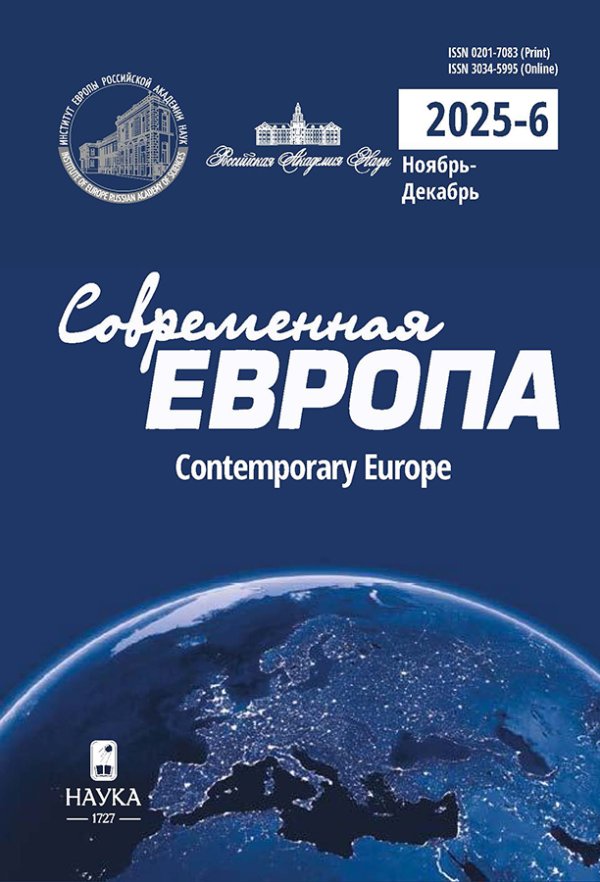Russia and European Countries: statistical assessment of differences in the level of gender differentiation
- Authors: Komar O.N.1
-
Affiliations:
- Kaliningrad State Technical University
- Issue: No 2 (116) (2023)
- Pages: 142-156
- Section: Articles
- URL: https://journals.rcsi.science/0201-7083/article/view/144474
- DOI: https://doi.org/10.31857/S0201708323020110
- EDN: https://elibrary.ru/OVCTZO
- ID: 144474
Cite item
Full Text
Abstract
About the authors
Oksana Nikolaevna Komar
Kaliningrad State Technical University
Email: oksana.komar@klgtu.ru
Kaliningrad, Russia
References
- Айвазова С.Г. (2018) Гендерный фактор развития политики. Политика развития, государство и мировой порядок. Под общ. ред. О.В. Гаман-Голутвиной, Л.В. Сморгунова, Л.Н. Тимофеевой. Издательство "Аспект Пресс", Москва. С. 22-23.
- Говорова Н.В. (2020) Рынок Европейского союза в цифровую эпоху: гендерный аспект. Женщина в российском обществе. № 3. С. 30-41. doi: 10.21064/WinRS.2020.3.3
- Гриненко С.В., Богомолова И.С., Задорожняя Е.К. (2014) Гендерные особенности развития человеческого капитала. Национальные интересы: приоритеты и безопасность. № 38 (275). Издательский дом "Финансы и кредит", Москва. С. 20-35.
- Елисеева И.И., Декина М.П. (2019) Статистический анализ гендерного неравенства оплаты труда в современной России. Статистика и Экономика. № 16 (5). С. 85-91. DOI: http://dx.doi.org/10.21686/2500-3925-2019-5-85-93.
- Мальцева И.О. (2005) Гендерные различия в профессиональной мобильности и сегрегация на рынке труда: опыт российской экономики. Издательство "EERC", Москва. 55 с.
- Пряжникова О.Н. (2021) Пандемия COVID-19 и усиление гендерного неравенства. Социальные и гуманитарные науки. Отечественная и зарубежная литература. Социология: Реферативный журнал. Сер. 11. № 2. С. 66-73. doi: 10.31249/rsoc/2021.02.06
- Римашевская Н.М. (2009) Заключение. Гендерные стереотипы в меняющемся обще-стве: опыт комплексного социального исследования. Сборник статей. Под ред. Н.М. Ри-машевской, Л.Г. Луняковой. Наука, Москва. С. 263-271.
- Хахалкина Е.В. (2020) Гендерный фактор в формировании правящих элит в Великобритании. Современная Европа. № 2. С. 176-187. DOI: http://dx.doi.org/10.15211/soveurope22020176187
- Шабунова А.А., Россошанский А.И. (2013) О гендерной дифференциации заработной платы на рынке труда. Проблемы развития территории. № 5 (67). С. 50-56.
- Шведова Н.А. (2022) Женское лидерство в мире: "продвижение вперед". Женщина в российском обществе. № 1. С. 32-47. doi: 10.21064/WinRS.2022.1.3
- Шведова Н.А. (2016) Политические партии и гендерное равенство. Женщина в российском обществе. № 4. С. 21-30. doi: 10.21064/WinRS.2016.4.2
- Lorber J. (1994) Paradoxes of gender. Yale University Press, New Haven, USA, London, UK. 429 p.
Supplementary files










